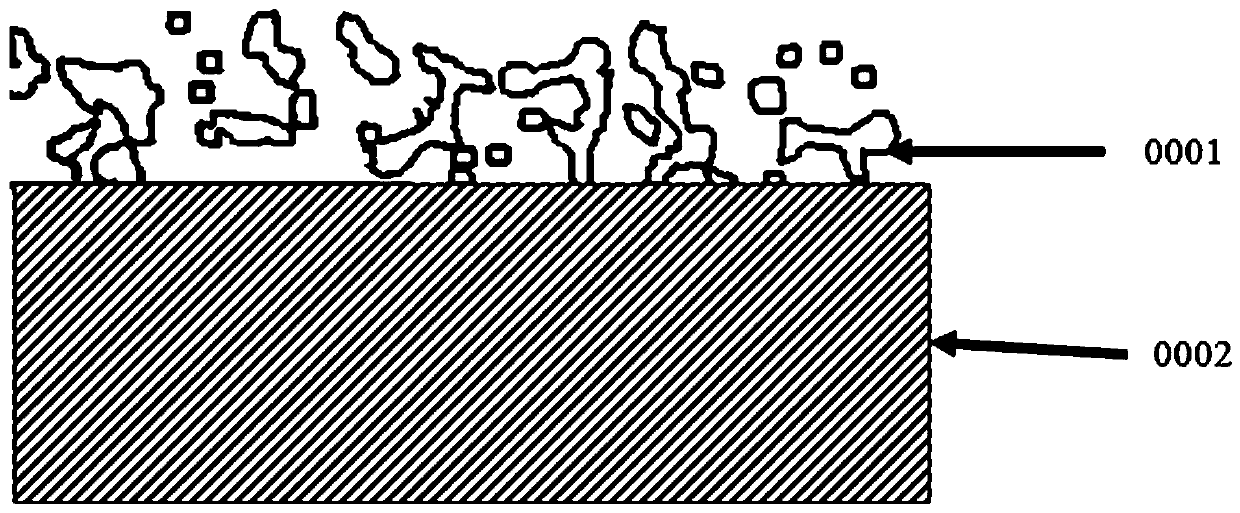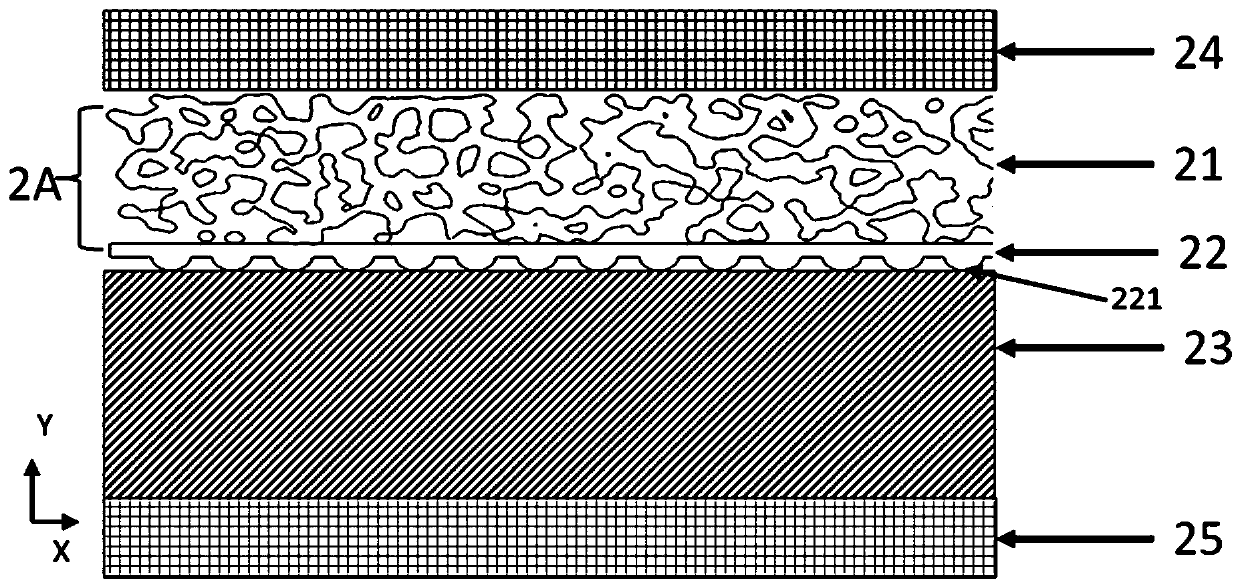Method for preparing connection structure between porous surface structure and substrate
A surface structure and porous structure technology, applied in welding equipment, manufacturing tools, resistance welding equipment, etc., can solve problems such as low bonding efficiency, high heat generated by contact, and damage to porous structures
- Summary
- Abstract
- Description
- Claims
- Application Information
AI Technical Summary
Problems solved by technology
Method used
Image
Examples
Embodiment 1
[0108] Such as figure 2 As shown, the present invention provides a connection structure, including a substrate 23 , an intermediate body 22 , and a porous surface structure 21 . Wherein, the porous structure of the porous surface structure 21 includes many staggered supports (or beams), and some multi-directional through-through, regular or irregular pores are formed between these supports (or beams). The intermediate body 22 is located between the porous surface structure 21 and the substrate 23 . Optionally, the intermediate body 22 is a non-porous bottom plate, that is, a solid bottom plate. Both the porous surface structure 21 and the intermediate body 22 are made of conductive materials (such as metal materials). The porous surface structure 21 and the intermediate body 22 are integrally formed, for example, by 3D printing additive manufacturing process, or vapor deposition process.
[0109] For example, the base 23 is solid, which is beneficial to the overall strengt...
Embodiment 2
[0120] For the first embodiment above, the porous surface structure 21 is a structure with a certain porosity, the intermediate body 22 is located between the porous surface structure 21 and the substrate 23 , and the intermediate body 22 is a non-porous bottom plate 22 . In fact, the intermediate body 22 can be the solid plate described in the first embodiment, or the porous structure with low porosity described in the second embodiment.
[0121] Therefore, the main difference from Embodiment 1 is that the connection structure of Embodiment 2 includes a first porous structure 41 in a high-porosity region, a second porous structure 42 in a low-porosity region (as an intermediate), and a substrate 43 ,Such as Figure 4a shown. The second porous structure 42 is located between the first porous structure 41 and the substrate 23 .
[0122] Exemplarily, the porous structures of the first porous structure 41 and the second porous structure 42 are both composed of many struts (or b...
Embodiment 3
[0129] For the first embodiment above, the top of the negative electrode 25 is in close contact with the bottom of the substrate 23, and the bottom of the positive electrode 24 is in close contact with the top of the porous surface structure 21; optionally, the positive electrode 24 and the negative electrode 25 are large The positive electrode 24 covers the top of the porous surface structure 21 , and the negative electrode 25 covers the bottom of the substrate 23 . Since the large-planar positive electrode 24 of Embodiment 1 is pressed on the top of the porous surface structure 21, the large-planar positive electrode 24 contacts and squeezes the surface of the porous surface structure 21, causing damage to the surface of the porous surface structure 21, for example, due to being Depression occurs due to pressure, and blackening, depression, and reduction of pore space are caused by temperature rise due to contact resistance heat generation.
[0130] In order to protect the s...
PUM
 Login to View More
Login to View More Abstract
Description
Claims
Application Information
 Login to View More
Login to View More - R&D
- Intellectual Property
- Life Sciences
- Materials
- Tech Scout
- Unparalleled Data Quality
- Higher Quality Content
- 60% Fewer Hallucinations
Browse by: Latest US Patents, China's latest patents, Technical Efficacy Thesaurus, Application Domain, Technology Topic, Popular Technical Reports.
© 2025 PatSnap. All rights reserved.Legal|Privacy policy|Modern Slavery Act Transparency Statement|Sitemap|About US| Contact US: help@patsnap.com



